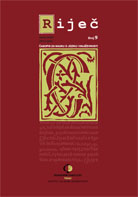Simbolika Kentaura u pjesništvu parnasa
Centaur’s Symbolics in Parnassian Poetry
Author(s): Frano VrančićSubject(s): French Literature, Greek Literature, Theory of Literature, Sociology of Literature
Published by: Filološki fakultet, Nikšić
Keywords: Greek mythology; Parnassian movement; centaurs; duality; animality; reason;
Summary/Abstract: Greek rebellion against the Ottomans boosted an interest in Greek civilisation. According to a renowned French Hellenist Pierre Albouy, French poetry returns to Greek antiquity since 1843. Théophile Gautier, Théodore de Banville and Victor de Laprade are considered as initiators of that return. Many poets revive gods of ancient Greece particularly centaurs, for their symbolics is ambiguous. Namely, human part of their body isn’t strong enough to tame their animal nature. A large number of poets, Parnassians in particular, chose these hybrid creatures so as to depict their own duality and contradictions. If we examine closely their apparitions especially in the poetry of Charles Leconte de Lisle and José-Maria de Heredia, we deduce centaurs have different symbolics since they embody wild strength and animal desires as well as human intellect.
Journal: Riječ
- Issue Year: 2013
- Issue No: 9
- Page Range: 205-224
- Page Count: 20
- Language: Croatian

